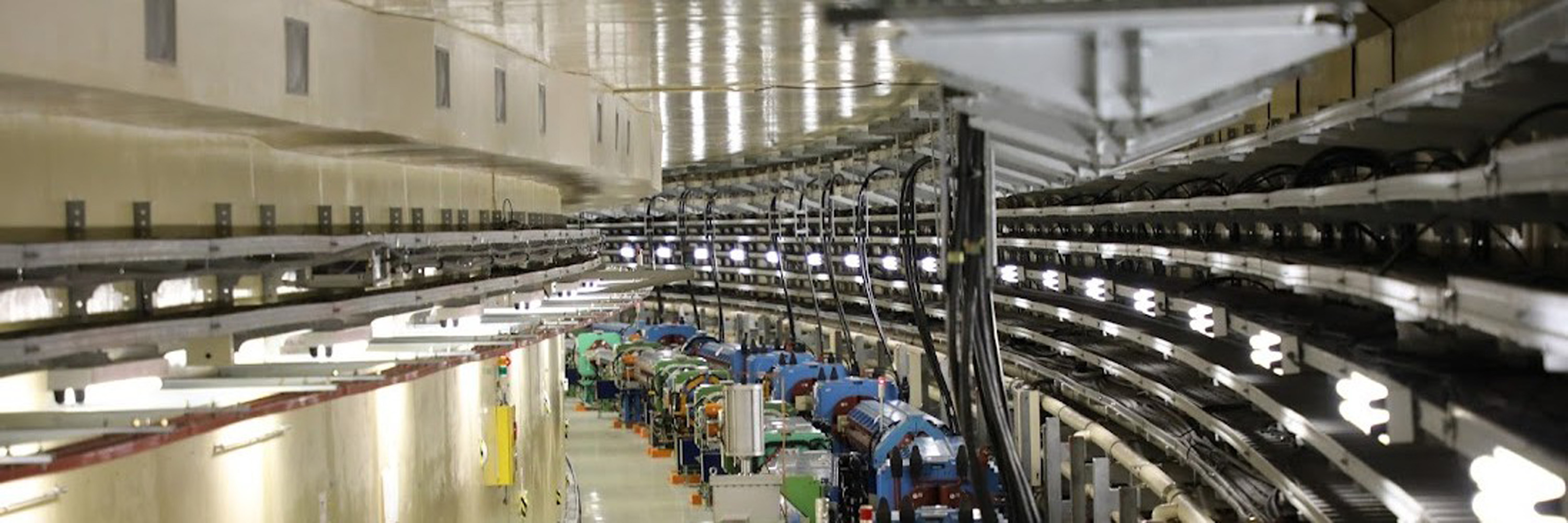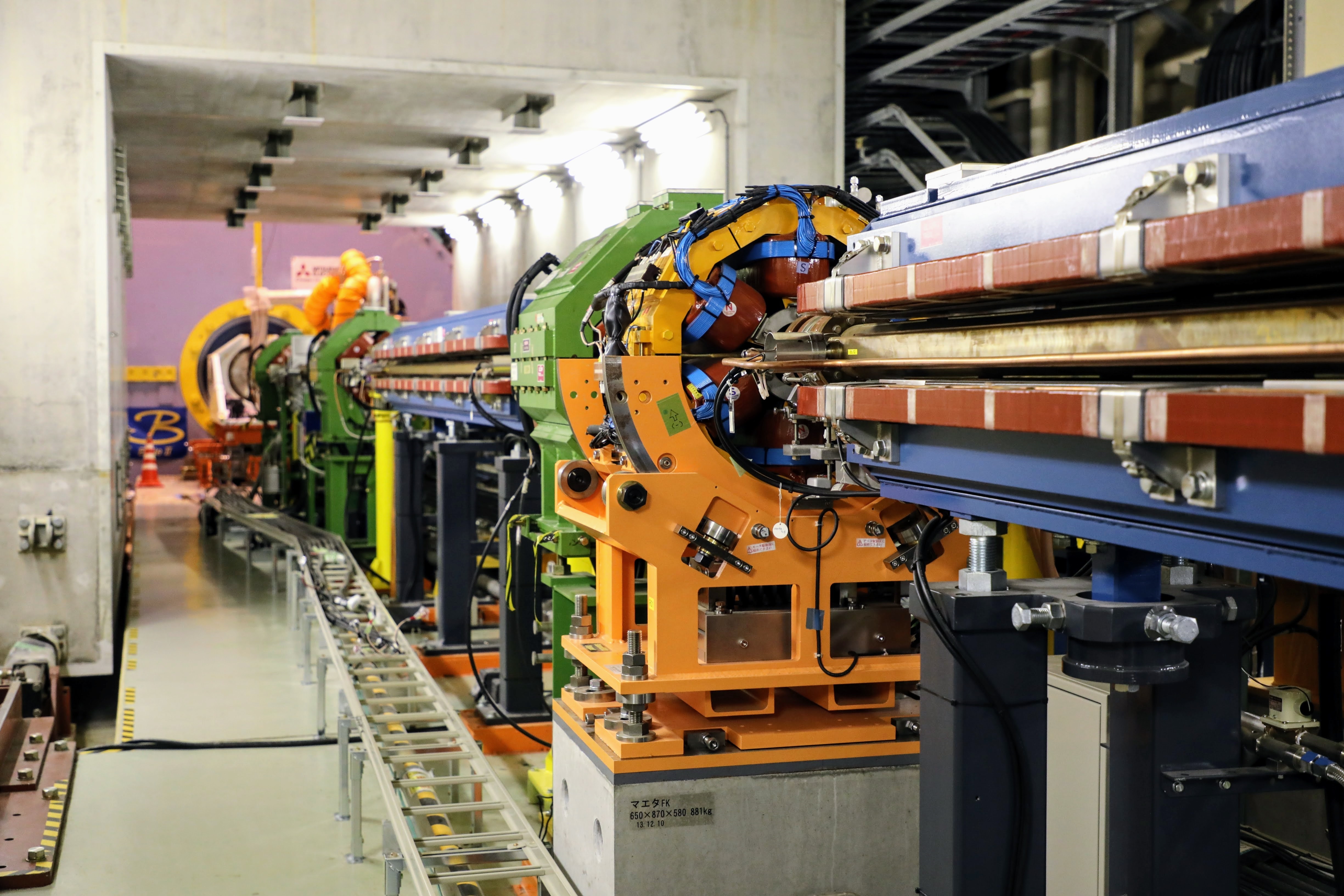
SuperKEKB is a particle accelerator, or more precisely a powerful 3 km electron-positron storage ring, located at Japan's KEK High Energy Physics Research Center. The upgraded SuperKEKB accelerator replaces its predecessor, the KEKB accelerator, which operated from 1998 to 2010 and held the world record for the luminosity (the number of particle encounters per area and unit time). High luminosity enables particularly high measurement accuracy - KEKB and even more so SuperKEKB are therefore designed for ultra-precise measurements.
Experiments with the older KEKB accelerator and the associated Belle detector confirmed the fundamental violation of CP asymmetry. This principle had been predicted by the two Japanese physicists Makoto Kobayashi and Toshihide Maskawa and leads to an asymmetry in the distribution of matter and antimatter. Indeed, this significant step in the history of particle physics was recognized with the Nobel Prize in 2008. But despite this groundbreaking success, a gap remains: While the existence of CP violation has been proven, the asymmetry found could not fully explain the actual imbalance between matter and antimatter, since it was far from large enough in terms of quantity.
The new particle accelerator, SuperKEKB, is expected to help to solve this puzzle. Like its predecessor, SuperKEKB operates at a center-of-mass energy of 10,580 GeV in the high-precision range, and is thus a B-factory: accelerating particles (electrons and positrons) in the appropriate energy range produces B mesons via an excited intermediate stage. Compared to KEKB, however, SuperKEKB is designed for a luminosity (number of particle encounters per area and time) increased by factor 30. This is expected to produce 50 times more collision events over the entire operating time. A higher collision rate is achieved by increasing the electron and positron currents in the beam tubes and by focusing the beams more at the point of interaction (the so-called nanobeam configuration). The resulting high resolution enables to complement and complete fundamental research in the search for phenomena beyond the Standard Model of particle physics, as is also done at the high-energy experiments at the LHC.
In February 2016, SuperKEKB was able to demonstrate "first rounds," i.e., the first rounds of electron and positron beams. Then, in April 2018, the first electron-positron collisions followed, and by June 2020, the SuperKEKB accelerator team succeeded in setting a new world record in instantaneous luminosity. In the coming years, the performance of SuperKEKB will be further increased step by step.

